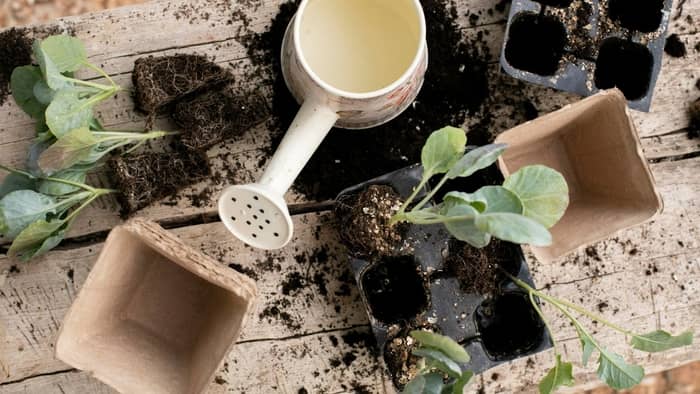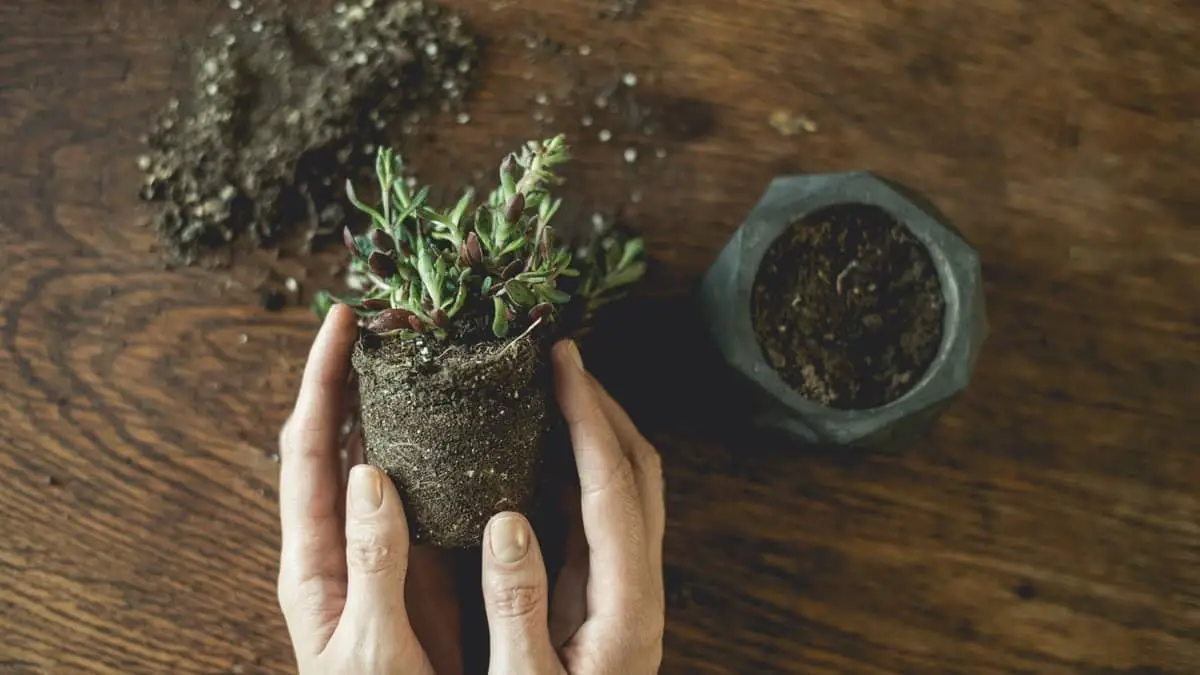Last Updated on September 13, 2022 by Griselda M.
The factors governing transplant shock recovery time are varied, and if you get this right, you can pop your plants into the ground in such a way that they hardly even notice the change of home. If you make a mess, you can set your plants back, or even kill them. Transplant shock recovery time is something a skilled gardener learns to manage for different plant types.
Let’s have a look at a few of my tips to minimize transplant shock and maximize plant productivity.
What Causes Transplant Shock?
The transplant shock recovery time is influenced by your ability to control the factors that cause transplant shock. Let’s have a look at the main causes of transplant shock:
Root damage
When we transplant certain plants, their roots can be quite fragile. If you are clumsy or rough in the transplanting process, you can damage the roots, which can cause the plant to struggle or even die (avocados are very susceptible to transplant root damage for example). Other plants, such as onions and leeks seem to be able to take nearly any level of abuse to their seedlings and their roots with limited risk of transplant shock.
One of the best ways of minimizing transplant shock recovery time caused by root damage is to avoid it entirely! To do this, you can grow plants with sensitive roots in a peat pot such as this and just plant the entire pot in the ground when you pot the plants out! I find for my garden, these work well for some herbs that I find have sensitive roots in this area. Basil, thyme, oregano, basilic, and parsley. I also like to use these pots to start my early baby squash.
Jack be little can be started in a peat pot. If you start these off on a warm windowsill, or in a greenhouse, you can get them going a full month before the last frost. This means that when you plant them the growth should be at least two or more feet long, and they will go crazy when they transplant.
This will give you so much squash you will be sick of them in a month. Then they make nice decorations. Keep the ones that last the best for seed for the next year. By the time this happens, you will feel like eating them again.
Light and heat/cold damage
Seedlings and plants that we are transplanting are often grown in very “gentle” environments, and when we transplant the plants they are now out in the “big bad world.” We have to use a certain amount of common sense to reduce the stress on our plants. I normally migrate my seedlings out of the greenhouse to a light-shaded area and let them stay there for a few days and water them well. This helps the plants adapt to the less humid air and the more windy environment.
When you transplant the plants into their final beds, there is always the risk of the plants being burnt due to more intense sunlight. I try to coincide transplanting with days where rain and cloudy weather is forecast. This normally helps them transplant successfully.
You can also break branches of an evergreen tree and stick these in the ground around your seedlings. The branches and leaves create a bit of shade and you can remove these slowly over three days, to gradually increase the amount of sunlight until your seedlings are hardened off and strong.
In some cases, when we transplant seedlings we also need to be cognizant of a cold shock to reduce transplant shock recovery time. If you live in an area where you can have late-season cold snaps, you may wish to consider using cloches to protect your plants. These will stop your plants from getting any frost burn.
Water shock
When you transplant a plant, it is important to water the plant – and also important that you do not water the plant so much that you drown it. Transplanting always causes a little bit of root damage – and damaged roots will rot if they get too wet. My general rule when transplanting is I irrigate a day before transplanting to build up soil moisture.
Your soil should be moist to at least the depth you plant to plant your seedlings. Then, transplant your seedlings into this moist soil. Give the transplants a sprinkle of water with a watering can, and then do that each day. Check if the soil is moist but not wet.
The seedlings will rapidly begin to extend their roots into the new soil and, as they do this, their ability to access water increases, and your plants will become established rapidly. Frequent light watering really helps with reducing transplant shock recovery time.
A Good Gardener is Like a Good Nurse/Doctor
I recently had a COVID jab as I had to travel to Germany and that was a requirement. I went to the clinic and the nurse said ok, are you ready? I said yes, and she said did you feel anything? I said no. When I told her I was ready for the jab she had already given it to me and was so proud of the fact that she knew how to give a jab in such a way that the patients did not even feel it!
If you transplant a plant well, it should not even notice it has had a transplant incident, and as a result, the transplant shock recovery time is basically zero. If however, you make a mess and all the soil falls off the roots, you break the leaves, and just make a general mess – which happens when you are learning – you will find that the plant can take a few weeks to recover!
Transplant Shock Recovery Time
In general, plants need at least two weeks to adjust to their new environment. During this time, the new environment should be stable.
The following is a general guide to help you determine how much time it will take for your transplants to recover from transplant shock:
-
Smaller transplants
A small transplant (about 6-12 inches tall) may take only a few days to recover if it even has shock!
-
Medium-sized transplants
A medium-sized transplant (about 12-18 inches tall) may take between one and two weeks to recover. If you have big enough pots, and transplant out of these, they will show no shock, however.
-
Large transplants
A large transplant (about 18-24 inches tall) may take up to three months to recover. For small trees and saplings, this can especially be the case if you make a mess of getting the plant out of the bag. I generally like to put the bag in a hole and cut the plastic off the soil using scissors to minimize root damage.
Planting Tips To Help Reduce The Transplant Shock Recovery Time

We have covered this above, but let’s repeat a few tips just to reinforce things:
Watering
Keep your container or pot watered during the transplanting process. If you don’t water your transplants, the soil may dry out, and the roots may become too dry to survive. This is especially true if you use potting soil. As mentioned earlier, build up soil moisture a few days before transplanting. Then water your plants with a watering can for a few days after transplanting to ensure a stable transition.
Fertilizing
Plants do not need fertilizer when they are transplanted. Allow them to get established before you even think of adding fertilizer.
Monitoring
Check your plants daily for the first week or two after planting. Look for signs of stress, wilted leaves, drooping branches, and yellowing of leaves. If you find these signs check the soil, and feel for moisture. If the soil is wet, then do not water anymore as the wilting may be due to overwatering. If the soil is dry, water the plants, and the wilting will go away.
Pest control
Avoid pests by keeping your plants clean and pest-free before you plant them. Also, be sure to buy healthy seedlings from a reputable nursery. If you suspect the seedlings may have had a few bugs on them when you bought them, give them a spray with neem oil when you get home.
The Best Time To Transplant Your Seedlings
The best time to transplant seedlings is after the threat of frost has passed. For me, I always follow the rule I learned from my Mom – transplant in the later afternoon once the heat of the day has broken, and the sun is not too bright. Try to transplant before a cloudy rain patch and protect the seedlings from both intense sunlight and late frost.
Final Remarks On Transplant Shock Recovery Time
If you transplant your plants as per my instructions above you will probably find the plants will transplant with no evidence of transplant shock at all. In the worst-case scenario, they may have a few days of shock and will recover. Transplanting seedlings is a very important skill to learn – and timing your planting is the best way to ensure you get the maximum success rate. Transplant in the evening, on a cool day when you have a few days of rain and drizzle and cloud cover forecast!
Frequently Asked Questions
Will my plant recover from transplant shock?
In general, most plants will recover after transplanting and can be expected to do well. If you really mess up the soil around the roots of the plant your chances go down a bit.
How long can transplant shock last?
If it lasts more than a week or so you have probably done things wrong. With practice you will not have these problems.
Is it normal for plants to wilt after transplanting?
This will depend on how you manage transplant shock. For me, I am a bit unhappy if my transplants wilt because it means I did not do things gently enough. When you start off, you will hurt the plants a bit and they may wilt. With time, if you get it right, plants should not wild with transplanting.
How do you fix a transplant shock?
Maintain soil moisture, provide a bit of shade for the plants, and they will recover.
Caroline is a gardener who loves to get down to the nitty–gritty of gardening. She proudly proclaims herself as a ‘dirt worshipper‘ and can often be found deep in the garden, covered in soil and singing to her plants. As a self–proclaimed ‘plant whisperer‘, Caroline believes that plants need love and attention just like any other living thing, and she loves to give them both. When she‘s not tending to her garden, you can often find her researching the latest gardening trends, or teaching others how to make their gardens thrive





